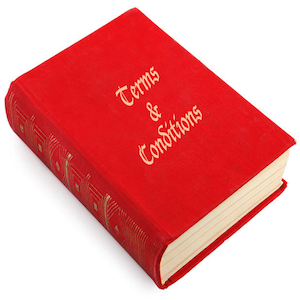By Dr. Ken Broda Bahm:

I write this blog principally for litigators, but sometimes it is worth remembering that transactional attorneys are also advocates who, depending on the circumstances, may also have persuasive goals. The point of seeking to influence, particularly when the transaction may become the subject of future legal battles, is a place of overlap between transactional attorneys. For litigators, the advice to “Tell a story” is commonplace, while for lawyers drafting transactional documents, it may be a bit less so.
A forthcoming article in the Nevada Law Journal aims to change that. In “The Power of a Good Story: How Narrative Techniques Can Make Transactional Documents More Persuasive,” law professors Susan Chesler and Karen Sneddon, from Arizona State University and Mercer Law Schools, respectively, say transactional attorneys should tell a story. Their thesis is that contracts and other transactional documents are not just expository devices to record a particular understanding, but instead are used to influence and persuade parties, and at times, third-party decision-makers. “Like a good story,” they write, “a transactional document can be drafted to be a powerful and persuasive document that both facilitates performance by the transacting parties as intended and, if necessary, encourages third-party decision makers to interpret the document as intended.”
The authors’ focus is on using narrative techniques at the drafting stage to make documents more effective in meeting those goals. For example, they suggest embedding narrative styles into contract recitals and operative terms in order to provide a broader understanding of the context and the rationale to more broadly convey the story that the agreement is a part of. In contrast, my focus in this post is on litigators whose task is to take the documents as they are and using them narratively in trial. In other words, I want to briefly look at why story matters when litigators are explaining, using, defending, or attacking the transactional documents at the heart of a case. For jurors or judges, it is a matter of not only answering “What’s in the contract?” but also answering “What’s the story of the contract?” as well.
I recommend giving some thought to three factors in making your document presentation more story based.
Your Point in the Narrative
The transactional document isn’t just a neutral object, it is a stage with a place in the narrative arc. It might be the beginning, the high-point, or the end of the story. It may even be a detour. The questions of “How did you get there?” and “Where did you go from there?” may not be strictly relevant from a contract interpretation perspective, and some jurors will try hard to focus on just four corners of the agreement. But for most fact-finders, they will want to know where this agreement fits into the story arc in order to understand the relationship between the parties. For most, the document itself is an important way station in the story, but the lead-up and the follow-through are critical as well.
Your Destination or Goal
Your transactional document isn’t just a neutral tool either. The overall goal or purpose matters as well. The parties had a destination in mind, and the document provides a way of getting there. In practice, a contract or other transactional document creates a “private law” that will govern the parties’ relationship. Helping to enforce that promise doesn’t just help the parties, it broadly helps to maintain the expectations that we all apply to our professional and personal relationships. Making that expectation part of the story can help. The authors give several examples that involve moving beyond the boilerplate language to include the reasons for operative terms. [For example, they note that the rationale for including a non-compete provision in an employment agreement is to emphasize the need to avoid unfair competition and encourage investment in employees.
Your Foresight
There is one more narrative element that strikes at the heart of a transactional document’s proper purpose: foreshadowing. Contracts and other documents are intended to be forward-looking documents, asking with as much specificity as possible, “What if this or that happens?” The better the document, the more these scenarios are anticipated and addressed. For litigators, it is a good position to be in when you are able to say, “When the parties drafted this document, they anticipated exactly the situation we are in today…. Here is the provision… and here is what they say should happen now.” In a way, the document is a time capsule of captured intention, and even if a party is feeling something different about it now, a jury is going to want to open that capsule to see and apply the intentions as they were when they were formed.
Broadly addressing the document within the narrative can aid understanding and, potentially, fill in some gaps. More basically, the authors emphasize that the documents that protect our transactions should be written so as to address the two factors that make stories believable:
- Narrative Coherence: It should hang together, be internally consistent and make sense on its own.
- Narrative Fidelity: It should be externally consistent, and fit with everything else that we know about the world, and jibe with what we understand about the parties and their goals.
I once had a lawyer tell me about his own case: “It isn’t really a ‘story’ case, it is a document case.” True, but the documents are almost always a critical part of the larger story.
_
______
Other Posts on Narrative:
- Add a Plot Twist to Your Trial Story
- Understand Narrative: Why People Watch Disaster Movies During a Disaster
- Develop Your Story Early
Chesler, S., & Sneddon, K. J. (2021). The Power of a Good Story: How Narrative Techniques Can Make Transactional Documents More Persuasive. Nevada Law Journal, Forthcoming.